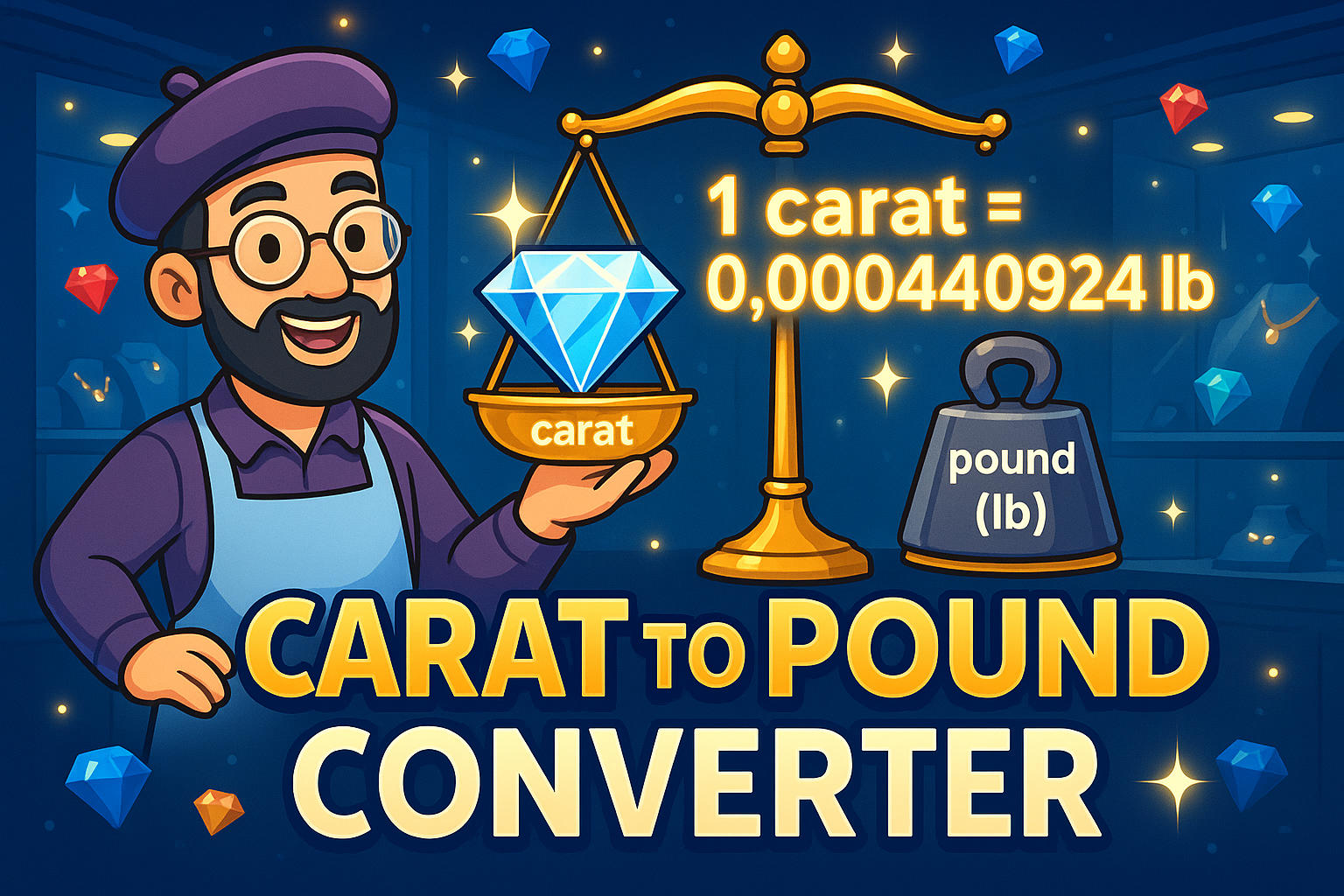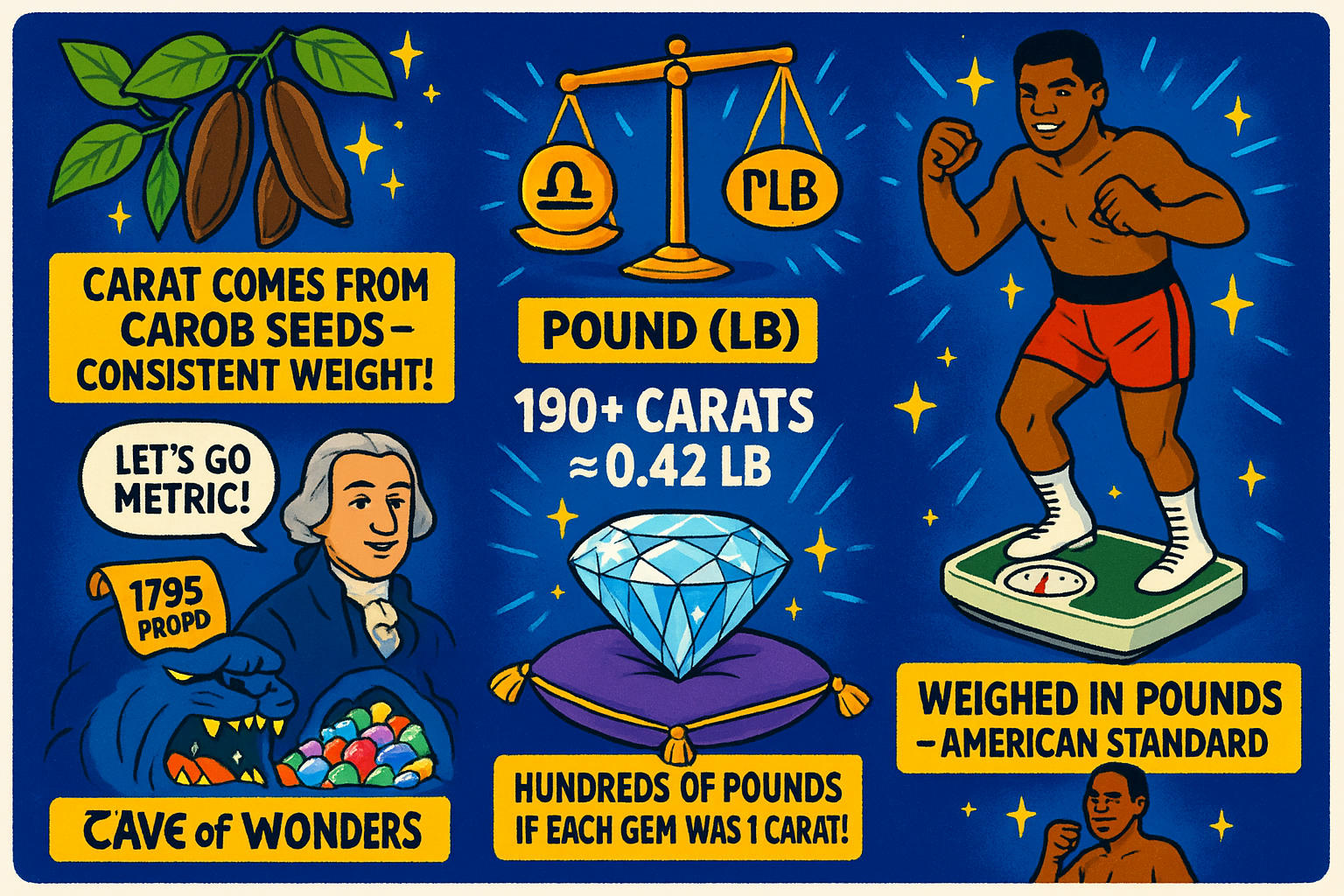carat to pound – How to convert ct to lb
Looking to convert carat to pound? Whether you're appraising precious gems or studying weight conversions, knowing how to switch between carats (ct) and pounds (lb) is a useful skill. This article will walk you through everything from definitions to real-life stories. If you're short on time, try our quick conversion tool for instant results.
What is a Carat?
A carat (ct) is a metric unit used to weigh gemstones and pearls.
The modern metric carat was adopted in 1907 and is universally accepted in the jewelry industry today. It's precise, standardized, and designed for high-value items like diamonds, rubies, and emeralds.
If you’re working with gemstone weights, you can also try our carat to pound converter to see other metric equivalents.
What is a Pound?
A pound (lb) is a larger unit of mass used in the imperial system, primarily in the United States and the UK.
Pounds are more commonly used for bulk weight, like body weight, food items, and industrial materials. But in special cases, like bulk gem shipments, you might encounter conversions from ct to lb to assess transport or value.
To explore more large-weight conversions, check out our weight converter.

How to Convert Carat to Pound
Here’s the standard formula:
1 carat = 0.000440924 pounds
To convert carats to pounds, multiply the number of carats by 0.000440924.
Example:
Say you have 5,000 carats of raw emerald. To find the weight in pounds:
5,000 × 0.000440924 = 2.2046 pounds
So, 5,000 ct = 2.2 lb (rounded)
Need to double-check? Use our carat to ounce converter and multiply by 16 to reach pounds.
Did you know?
-
The term carat comes from the carob seed, historically used by ancient traders as a reference weight due to its unusually consistent mass. Its name originates from the Greek word kerátion.
-
The pound (lb) abbreviation comes from the Latin word "libra", meaning scales or balance, which also ties into its astrological symbol ♎.
-
The Koh-i-Noor diamond, part of the British Crown Jewels, was once over 190 carats before being recut. That’s nearly 0.42 pounds—a surprisingly heavy gem for its small size.
-
In 1795, Thomas Jefferson proposed the U.S. adopt a decimal system of weights, replacing the pound with a more metric-based alternative. The idea didn’t stick, but it sparked modern measurement reforms.
-
In the animated film “Aladdin”, the Cave of Wonders is filled with gemstones. If each were one carat, the total treasure could weigh over a hundred pounds—a fantasy-worthy fortune.
-
The legendary boxer Muhammad Ali often cut weight before matches. His weigh-ins were measured in pounds, not kilograms, reflecting the American standard for tracking athletic mass.
The Weight of the Cullinan Diamond
In 1905, in a South African mine, a worker spotted a sparkle in the rock wall. What he discovered would become the largest rough diamond ever recorded—the Cullinan Diamond, weighing 3,106 carats, or roughly 1.37 pounds.
To put that into perspective, this was a gemstone the weight of a pineapple.
The massive diamond was gifted to King Edward VII, who later had it cut into several stones, including the famous Cullinan I, now part of the British Crown Jewels. Some of the gems still reside in royal regalia used for coronations and state events.
This story isn’t just a royal tale—it’s a real-world example of how carat to pound conversions matter in the history of gemstones.

Conclusion
Converting carat to pound is more than a math problem—it's an essential part of how we understand value, scale, and transport in the gem trade. Whether you're a student, a jeweler, or just curious, now you know how to convert ct to lb easily using the formula:
1 carat = 0.000440924 pounds
Want to explore more conversions? Use our unit conversion and weight converter to handle any weight unit, big or small.

